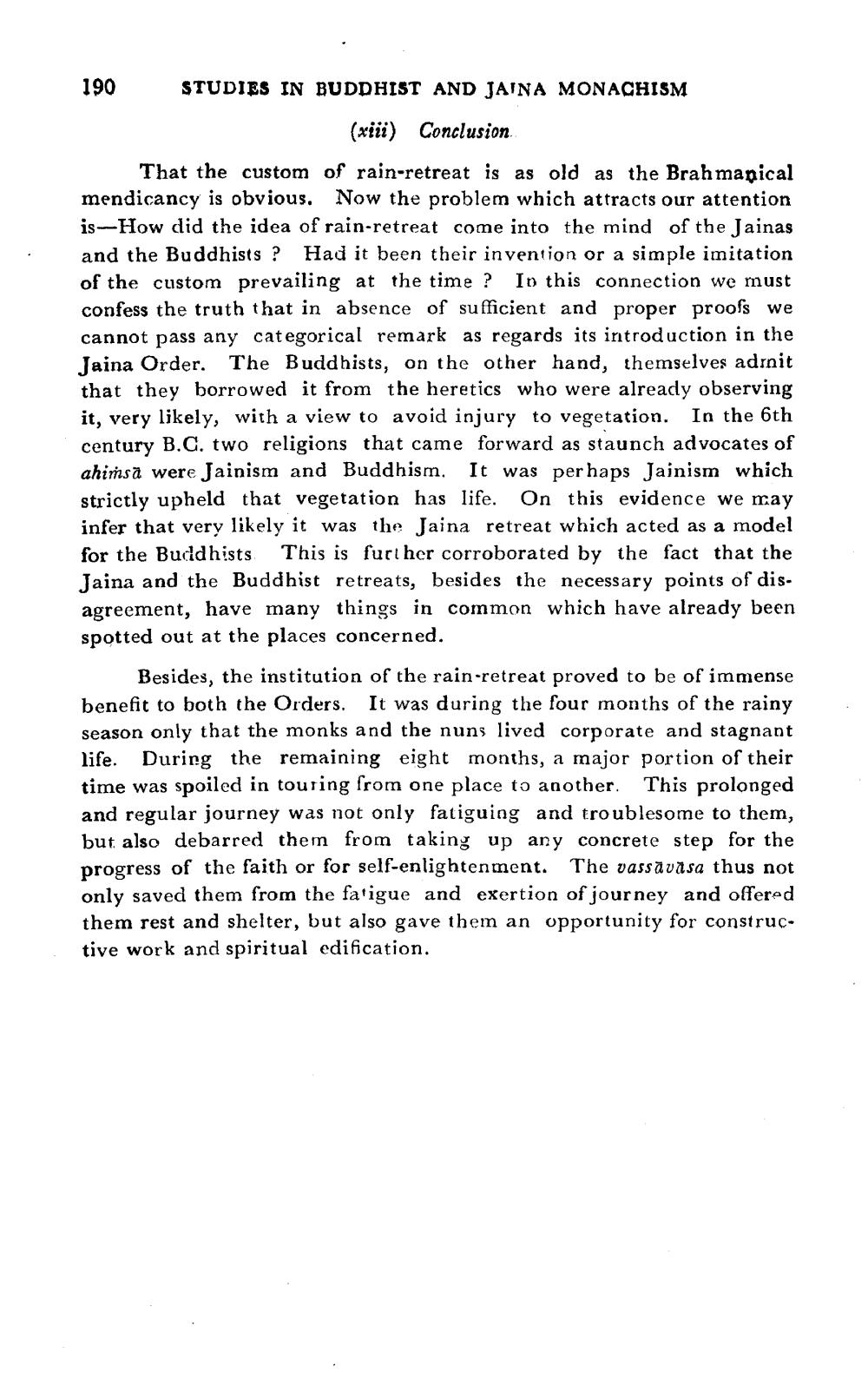________________
190 STUDIES IN BUDDHIST AND JAINA MONACHISM
(xiii) Conclusion That the custom of rain-retreat is as old as the Brah manical mendicancy is obvious. Now the problem which attracts our attention is-How did the idea of rain-retreat come into the mind of the Jainas and the Buddhists ? Had it been their invention or a simple imitation of the custom prevailing at the time ? In this connection we must confess the truth that in absence of sufficient and proper proofs we cannot pass any categorical remark as regards its introduction in the Jaina Order. The Buddhists, on the other hand, themselves adrnit that they borrowed it from the heretics who were already observing it, very likely, with a view to avoid injury to vegetation. In the 6th century B.C. two religions that came forward as staunch advocates of ahińsă were Jainism and Buddhism. It was perhaps Jainism which strictly upheld that vegetation has life. On this evidence we may infer that very likely it was the Jaina retreat which acted as a model for the Buddhists This is further corroborated by the fact that the Jaina and the Buddhist retreats, besides the necessary points of disagreement, have many things in common which have already been spotted out at the places concerned.
Besides, the institution of the rain-retreat proved to be of immense benefit to both the Orders. It was during the four months of the rainy season only that the monks and the nuns lived corporate and stagnant life. During the remaining eight months, a major portion of their time was spoiled in touring from one place to another. This prolonged and regular journey was not only fatiguing and troublesome to them, but also debarred them from taking up any concrete step for the progress of the faith or for self-enlightenment. The vassa vasa thus not only saved them from the fatigue and exertion of journey and offered them rest and shelter, but also gave them an opportunity for constructive work and spiritual edification.




